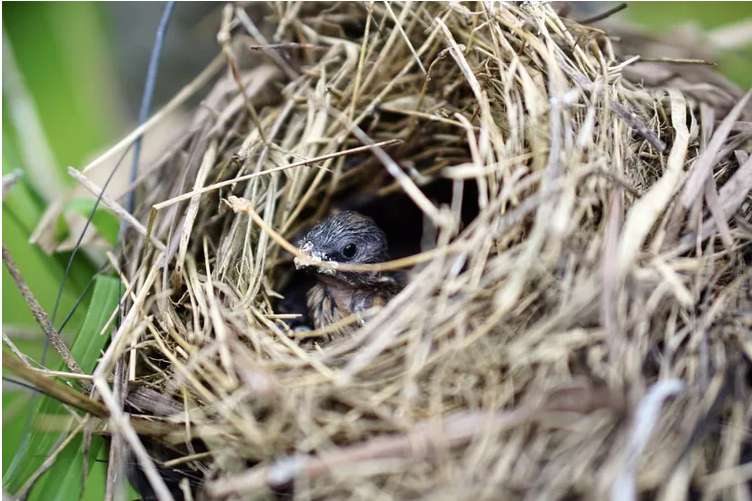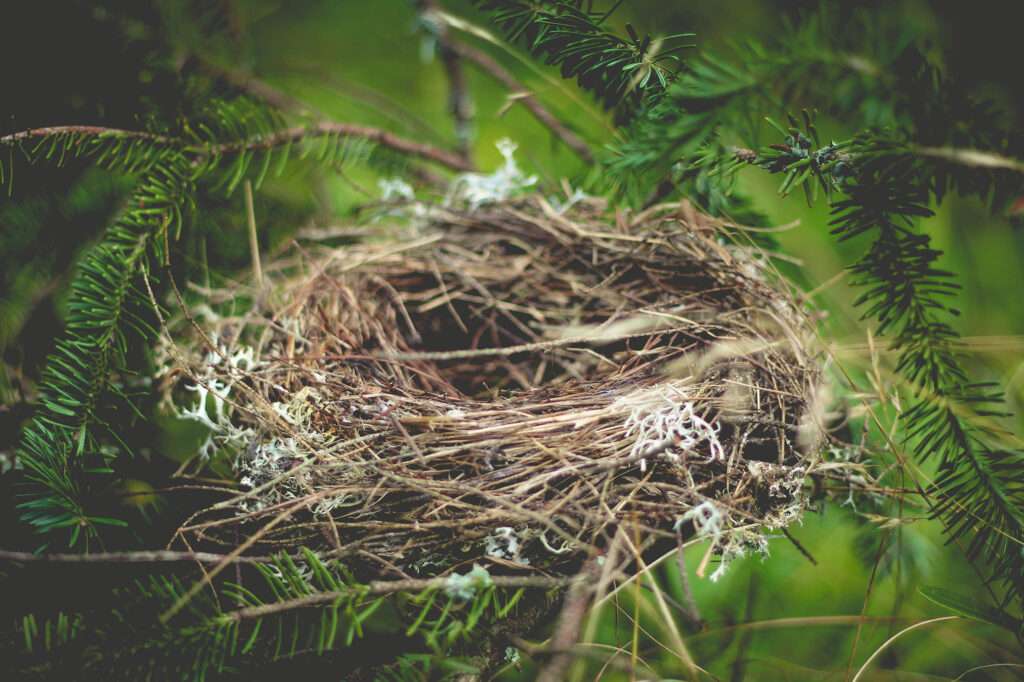Wildlife-Friendly Nest Relocation: Can You Move a Bird’s Nest Successfully?
Hello, fellow bird enthusiasts! Today, we embark on a journey to explore the delicate topic of moving a bird’s nest. As a bird lover and expert, I understand the importance of preserving these avian abodes while ensuring the safety and well-being of our feathered friends.
In this guide, I’ll provide valuable insights into the types of bird nests, the reasons for considering relocation, the legal aspects, how to assess the nest, a step-by-step guide to moving a bird’s nest, and much more! So, let’s spread our wings and dive into this intriguing topic.
Can You Move a Bird’s Nest? Ans: Yes, you can move a bird’s nest, but only in certain circumstances. It is important to note that moving a bird’s nest can be a risky endeavor, as parent birds may abandon their eggs or young if the nest is disturbed. Additionally, moving a nest may also make it more vulnerable to predators.
Understanding Bird’s Nest Types

Birds are nature’s architects, and their nests come in many shapes and sizes. Each species has a unique nest-building style tailored to their needs. The diversity is astounding, from the intricately woven nests of songbirds to penguins’ burrows.
Songbirds like sparrows and robins are known for their intricate, cup-shaped nests. They use twigs, grass, and even bits of string to construct cozy homes for their hatchlings.
Woodpeckers and chickadees, among others, are cavity nesters. They excavate holes in trees or use pre-existing crevices as their nesting sites.
Plovers and shorebirds opt for the simplicity of ground nests, carefully selecting concealed spots in the sand or pebbles for their nests.
See Also: Can You Eat a Hummingbird?
Reasons for Moving a Bird’s Nest

Moving a bird’s nest is a complex decision that should not be taken lightly. There are several valid reasons why you might consider relocating a nest:
Safety Concerns
Moving may be essential to protect the eggs and chicks from harm if a nest is in an unsafe location, such as a construction site or a busy thoroughfare.
Environmental Threats
Natural disasters like floods or wildfires can threaten a nest’s stability. Relocating the nest to a safer environment can be a lifesaving measure.
Human Intervention
Human activities such as tree removal or property renovations can sometimes necessitate nest relocation to ensure the birds’ survival.
Related Post: Can Birds Move Their Eyes?
Legal Considerations
Before you even think about moving a bird’s nest, it’s crucial to understand the legal framework surrounding this delicate matter. Laws regarding bird nest relocation vary by region and species, so consult your local wildlife authorities or a bird expert for guidance.
In many places, it’s illegal to disturb or move nests of certain protected bird species, especially during the breeding season. Violating these laws can result in hefty fines and legal consequences. Always respect local regulations and prioritize the welfare of our avian friends.
Assessing the Nest

Once you’ve determined that relocation is necessary and legally permissible, it’s time to assess the nest. This step ensures the nest’s successful move and the birds’ continued well-being.
Nest Stage
Determine the stage of the nest. If it contains eggs or chicks, you must act swiftly and cautiously. Nests with only building materials are generally easier to move.
Bird Species
Identify the bird species in question. Different birds have distinct nesting habits and requirements. Understanding the species’ specific needs will help you recreate a suitable environment.
Nest Materials
Take note of the materials used in the nest. Some birds are meticulous builders, while others are more casual. Knowing what the nest is made of will aid in reconstruction.
Can You Move a Bird’s Nest?

It is possible to move a bird nest, but it is not recommended. Birds have a strong instinct to protect their nests and young, and moving the nest can stress them out and cause them to abandon it. Moving the nest can also disrupt the development of the eggs or chicks.
If you absolutely must move a bird nest, there are a few things you can do to minimize the risk of harm to the birds:
- Only move the nest if it is inactive. This means no eggs or chicks are in the nest, and the parent birds are not actively using it.
- Move the nest quickly and carefully. Try to move the nest as a whole, including the nesting material and the eggs or chicks (if present).
- Place the new nest in a similar location to the original nest. This will help the parent birds to find it again.
Bird Nest Relocation: Step-by-Step Guide
Step 1: Prepare Necessary Supplies
Gather your supplies, including gloves, a sturdy container (like a basket or box), and materials similar to the original nest (twigs, grass, leaves).
Step 2: Check Local Regulations
Double-check local regulations and permits for nest relocation. Ensure you have the necessary approvals.
Step 3: Assess the Nest
Carefully inspect the nest, as discussed earlier. If eggs or chicks are present, take extra care not to disturb them.
Step 4: Secure the Area
Create a safe zone by marking the nest’s current location. This will help guide the birds to the new nest site.
Step 5: Gently Remove the Nest
Wearing gloves, gently lift the nest and its contents into your container. Be as gentle as a feather’s touch to avoid damaging the nest or harming its inhabitants.
Step 6: Prepare the New Nest Site
Choose a new location that mimics the original as closely as possible. Ensure it’s safe and free from potential threats.
Step 7: Place the Nest
Gently transfer the nest to its new location. Take care to maintain the same orientation as in the original site.
Step 8: Monitor
Keep a watchful eye on the relocated nest. Ensure the parent birds accept the new site and continue caring for their offspring.
Monitoring After Relocation
Relocating a bird’s nest isn’t the end of the story. Continuous monitoring is essential to maximize the chances of success.
- Observation: Regularly observe the nest from a distance to ensure the parent birds feed and care for their young.
- Protection: Protect the nest from predators using mesh or other barriers if necessary.
- Record Keeping: Maintain a record of the birds’ progress, including hatching and fledging dates.
- Consult Experts: If you encounter any difficulties or have concerns, consult with local bird experts or wildlife rehabilitators for guidance.
Frequently Asked Questions (FAQs)
Is it legal to move any bird’s nest?
In most regions, moving nests of protected bird species is not legal, especially during the breeding season. Always consult local wildlife authorities or experts before attempting any nest relocation.
Can I relocate a nest with eggs or chicks?
Relocating a nest with eggs or chicks should be done with extreme caution. It is best to avoid moving such nests unless there are serious safety concerns.
What can I do to attract birds to my garden?
To attract birds to your garden, provide food, water, and suitable nesting sites. Bird feeders, birdbaths, and birdhouses can make your garden a welcoming haven for our feathered friends.
Conclusion
As bird lovers and enthusiasts, we aim to strike a balance between preserving nature and ensuring the safety of our beloved avian companions. Moving a bird’s nest should always be a last resort, taken with the utmost care and consideration for the bird’s well-being. By following the guidelines outlined in this comprehensive guide, we can contribute to protecting and conserving our feathered friends while enjoying their presence in our lives.
So, the next time you ask, “Can you move a bird’s nest?” remember that with knowledge, empathy, and a gentle touch, it is possible to safeguard these precious homes and the lives they shelter.




